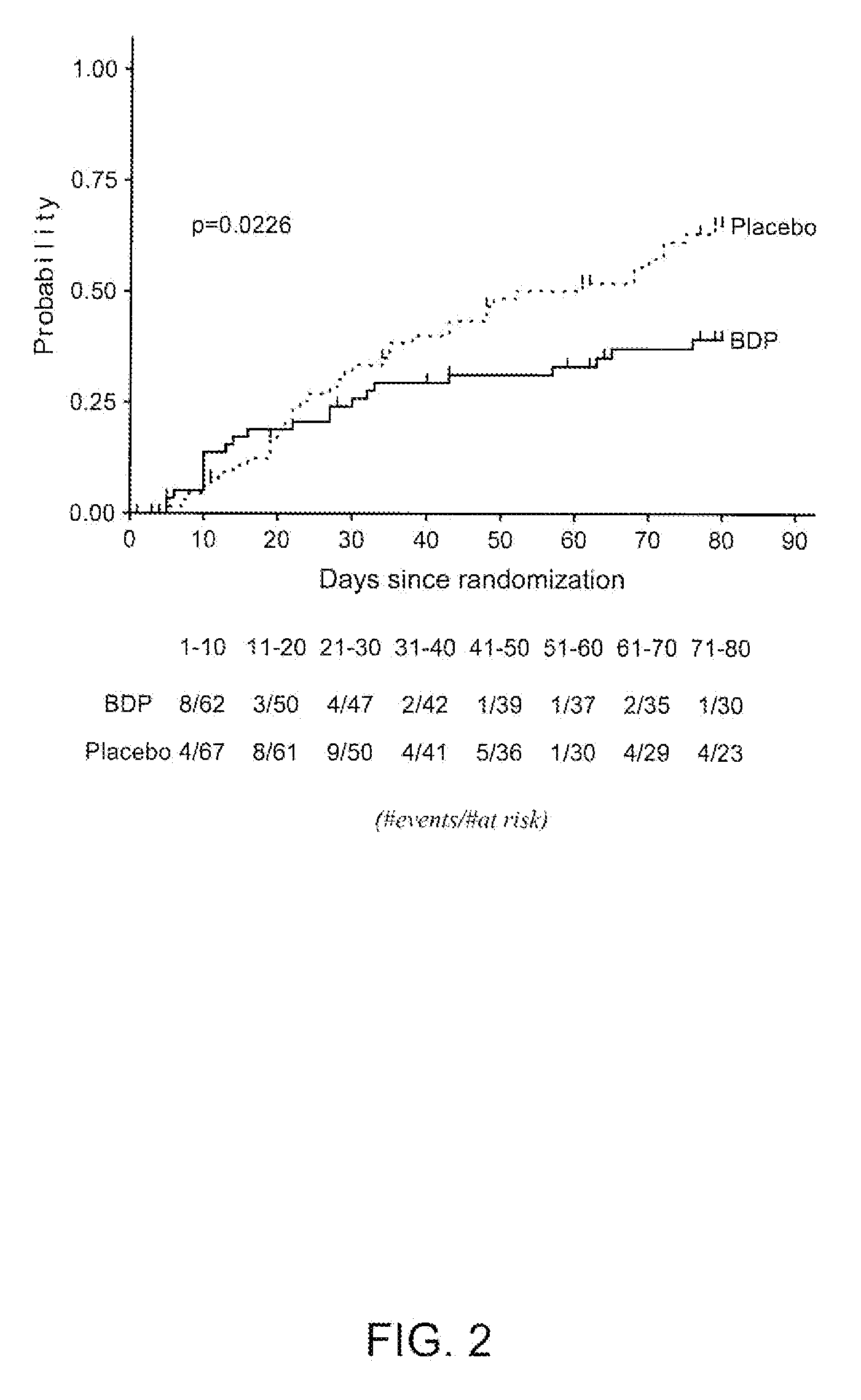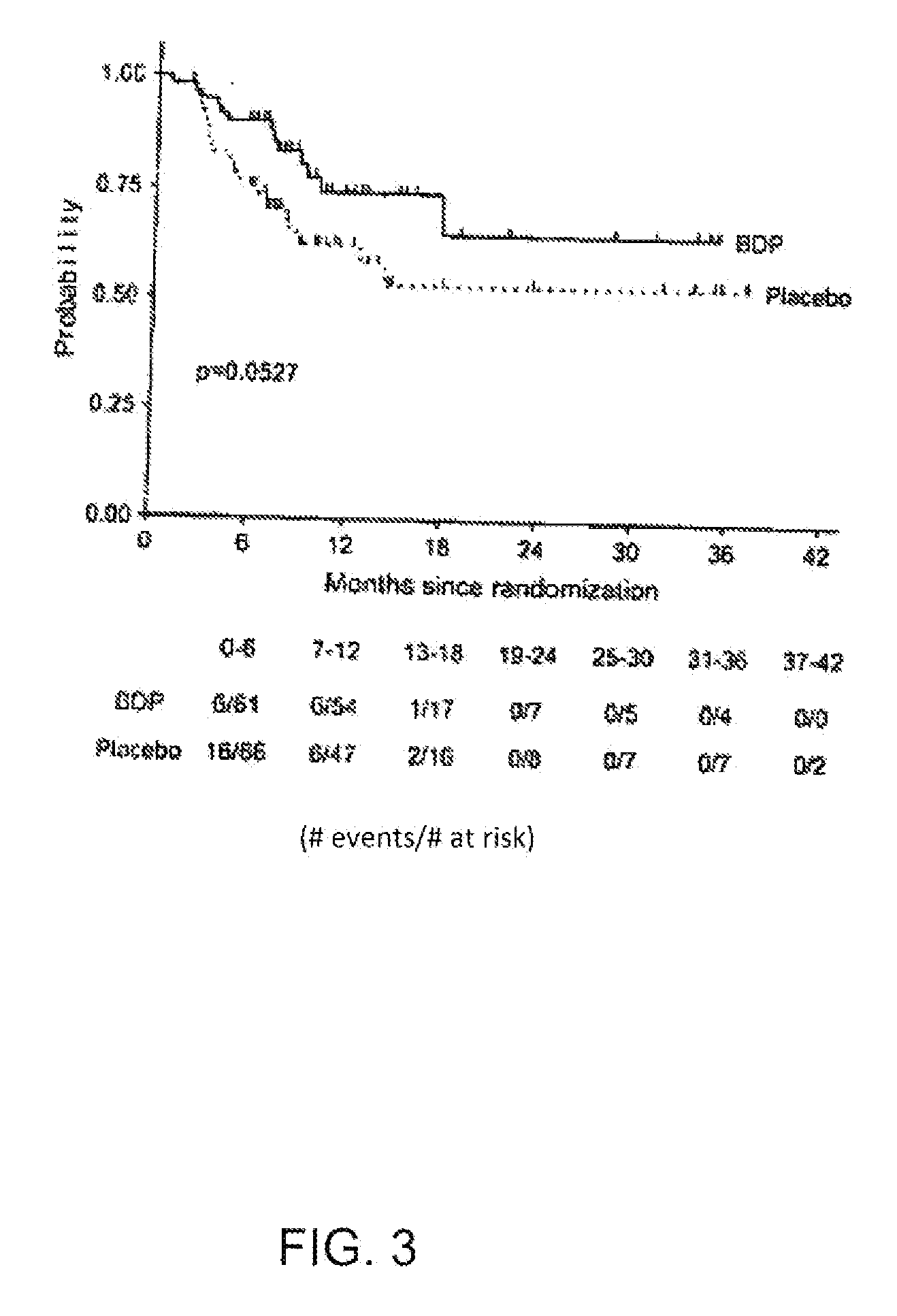Method of Treating Cancer by Administration of Topical Active Corticosteroids
a corticosteroids and topical technology, applied in the field of cancer treatment, can solve the problems of destroying malignant cells, interfering with the production of healthy blood cells in the body, and unable to protect itself against infections, so as to reduce or eliminate tumors, the effect of decreasing or eliminating tumors
- Summary
- Abstract
- Description
- Claims
- Application Information
AI Technical Summary
Benefits of technology
Problems solved by technology
Method used
Image
Examples
examples
[0029]The following examples are meant to be illustrative of the present invention and are not meant to be limited to such embodiments.
example i
Control of GVHD by Treatment with BDP
[0030]A randomized, prospective, double blind, placebo controlled, multi-center pivotal trial was conducted to evaluate beclomethasone dipropionate (BDP) as a treatment of cancer by enhancing the graft versus leukemia effect (GVL) while controlling graft versus host disease (GVHD) following hematopoietic stem cell transplant in blood-borne cancer patients. The trial was divided into two phases, the purpose was to monitor short term effectiveness of BDP to control graft versus host disease in the first phase and the second phase was to assess the effect of the drug treatment on long term survival due to recurrence of hematologic malignancy or other causes of death.
[0031]To minimize the exposure of patients to long term exposure to systemic corticosteroids (prednisone or prednisolone), which are used as the standard of care to prevent or treat symptoms of graft versus host disease in conjunction with other immunosuppressive drugs, patients were tre...
example ii
Enhancement of the GVL Effect by Treatment with BDP
[0041]Treatment with BDP was associated with a statistically significantly higher overall survival rate 200 days post-transplant relative to placebo (p=0.006, Z-test). Based on Kaplan-Meier estimates, the overall survival rate 200 days post-transplant was 0.91 for the BDP group (95% CI: 0.66, 0.84) versus 0.74 for placebo (95% CI: 0.66, 0.84). The most common primary cause of death was relapse of the underlying malignancy, which occurred in 6 patients in the placebo group (9%) and in 2 patients in the BDP group (3%). The second most common cause of death appeared to be sepsis.
[0042]Based on a univariate time-dependent Cox proportional hazards model, the risk of mortality during this period was 68% lower following the initiation of treatment with BDP when compared to no treatment (hazard ratio 0.32; 95% CI: 0.12, 0.87; p=0.0252). A multivariate Cox model was used to evaluate the effect of BDP while simultaneously accounting for selec...
PUM
| Property | Measurement | Unit |
|---|---|---|
| median time | aaaaa | aaaaa |
| time | aaaaa | aaaaa |
| concentration | aaaaa | aaaaa |
Abstract
Description
Claims
Application Information
 Login to View More
Login to View More - R&D
- Intellectual Property
- Life Sciences
- Materials
- Tech Scout
- Unparalleled Data Quality
- Higher Quality Content
- 60% Fewer Hallucinations
Browse by: Latest US Patents, China's latest patents, Technical Efficacy Thesaurus, Application Domain, Technology Topic, Popular Technical Reports.
© 2025 PatSnap. All rights reserved.Legal|Privacy policy|Modern Slavery Act Transparency Statement|Sitemap|About US| Contact US: help@patsnap.com



